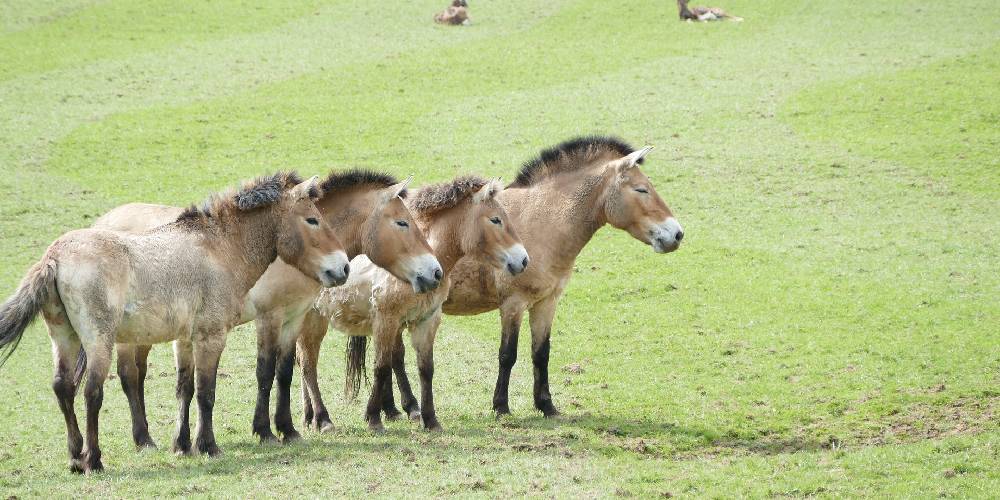When I was doing my research on the Fjord pony breed, I read that the Fjord is partially descended from the Przewalski’s horse. I remember reading some information on this unique wild horse breed, but I never really gave this horse much interest, that is until now. I read that these horses haven’t ever been successfully domesticated and that they only come in one color. Wanting to learn more, I did extensive research on this breed and now knowing much more on these wild horses, I want to share what I know.
What Is The Przewalski’s Horse?
The Przewalski’s horse is a small breed of wild horse found in Asia. These horses can only be dun in color and are known to have zebra striping, a dorsal stripe, and a white muzzle. Przewalski’s horses have never been completely domesticated and none are known to be able to be ridden. These horses, though the size of a pony, are still considered horses.
Who Was Przewalski?
These wild Asian horses were named after the man who discovered them back in 1881. His name was Nikolai Przewalski and he was a Colonel in the Russian military. This man discovered these animals in Mongolia, though when they were more populous, they would have roamed all over Asia.
How Big Are Przewalski’s Horses?
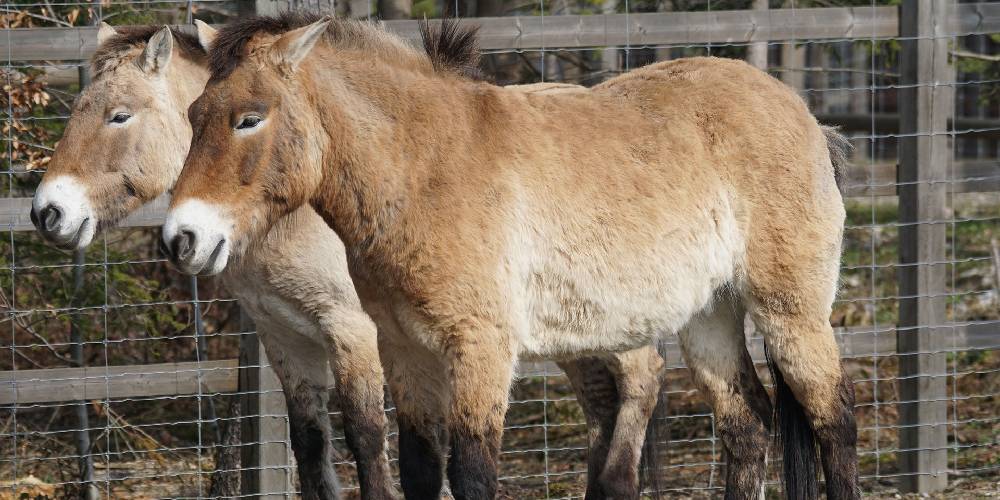
Even though Przewalski’s Horses are considered horses, they actually are just the size of ponies. They can only stand at up to 13 hands high and rarely exceed that height.
These horses, because of their small size, weigh between 750 and 1,000 pounds. It is not really heard of that these animals would weigh more than 1,000 pounds.
What Colors Can These Small Horses Be?
Kind of like the Norwegian Fjord pony, the Przewalski’s horse can only come in dun. This means that they have dark legs, a dark mane, a dark tail, black zebra striping, a white or light-colored muzzle, and a golden-brown coat. This breed cannot be seen as any other color or else they will not be considered to be a purebred Przewalski’s horse.
The History Of The Przewalski’s Horse
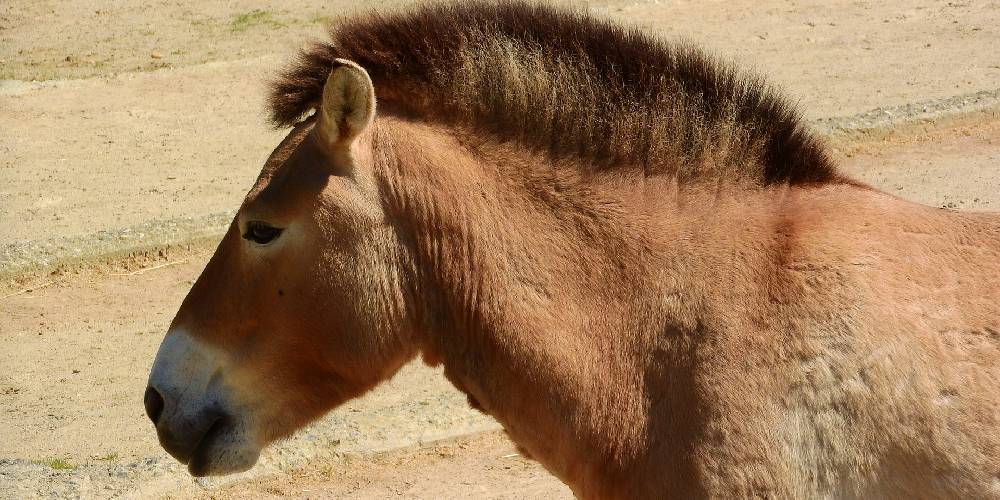
The Przewalski’s horse was identified and discovered by the Russian Colonel Nikolai Przewalski by which this horse was named. Colonel Przewalski found these horses in the Dzungarian region in western Mongolia.
In ancient times, this horse would live all over the steppes of Europe and Asia and roam the plains in sizable herds.
These ancient horses are believed to be a direct link back to the prehistoric horse and it is believed that the Przewalski’s horse resembles many of those horses around tens of thousands of years ago.
Between the years 1910 and 1960, only 14 wild Przewalski’s horses were caught to be used for conservation of the bred. These 14 horses were the only members of the breed at the time. With careful breeding and protection, the numbers of these horses have increased from 14 to 1,900 in the last 50 years.
Identifiable Traits Of The Przewalski’s Horse
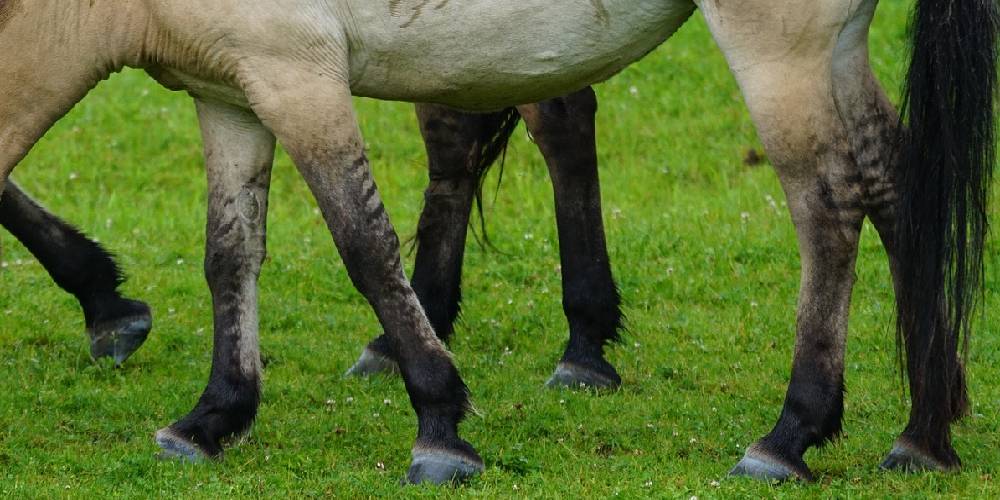
Mane
Similar to when horse’s manes are cut so they stand up on end, the Przewalski’s horse has a mane that is already put in this ‘style.’ Sometimes the mane of a Przewalski’s horse will grow out slightly, but not enough to cover their neck. The mane of this breed will either be black or a very dark brown.
Tail
Like the mane, the tail of the Przewalski’s horse is either black or dark brown. These horses are seen with a normal tail found on an average horse, or a tail that mainly starts at the end of the tail bone.
Muzzle
Like other dun horses, the Przewalski’s horse has a white or pale muzzle in comparison to the rest of its body. This is not a unique marking for this breed or color of the horse and it is a trait found in most dun horses and donkeys.
Legs
Similar to the legs seen on a buckskin horse, the Przewalski’s horse has black legs that aren’t really ever seen with white markings. The dun coloration of their coat doesn’t really ever extend very far down the horse’s leg before it starts fading to the black that the rest of the legs are. The legs often carry dark markings known as zebra stripes
Head
The head of one of these wild horses is very large and block-like. They have a wide, large jaw, a round large muzzle, and far-set eyes. They also have small round ears that take in all the noises of their surroundings very well.
Coat Color
Przewalski’s horses can only ever be seen as dun. No other color, even bay, chestnut, and black can’t be seen in this unique breed without the offspring being considered a non purebred foal.
What Are These Small Horses Good For?

Przewalski’s horses really seem to be independent horses and none of them have been trained or broken in so far because of their wild horse instincts. Though some of these horses live in conservation and care areas, they still aren’t used to or trust people. This makes them really only good at keeping the grass short and raising their foals and offers pretty much no benefit to man in their uses. These horses cannot be tamed or ridden so riding and competitions are not possible to do on this breed.
Fun Facts On This Unique Horse
- The Przewalski’s horse has 66 chromosomes instead of the average chromosome count for a normal horse at 64.
- This breed was one of the founding breeds for the Norwegian Fjord Pony breed
- The Przewalski’s horse is also known as the Asian Wild Horse
- Even when living in zoos, Przewalski’s horses retain their wild and aggressive temperaments.
- No Przewalski’s horse has ever been trained or fully successfully tamed.
- The head of the Przewalski’s horse is much bigger, wider, and heavier than any other horse breed on earth. In proportion to their body, they have very large heads.
FAQs On The Przewalski’s Horse
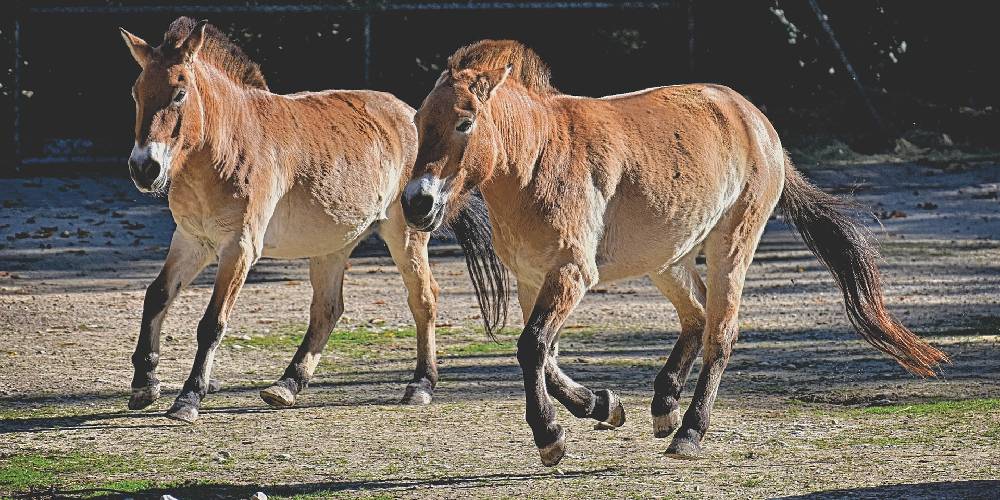
Are Przewalski’s horses endangered?
Yes. Sadly, this horse breed is extremely endangered. In Europe and Asia, there is extensive research being done on the breed. All of the Przewalski’s horses found in the wild were brought to zoos and conservation centers to try to save them and increase this horse’s numbers and population. The horses that were first caught to increase the breed’s numbers were captured between 1910 and 1960. There were only 14 members at the time, but today there are around 2,000 Przewalski’s horses alive. Without conservation efforts, the breed would have probably have gone completely extinct.
Are these horses wild?
Yes, the Przewalski’s horse is one of the last completely wild horse breeds known in the world. Even the wild mustangs that roam all across North America aren’t completely wild as many of them are domesticated and nearly all of them descended from domestic horses.
Does this breed have a good temperament?
No. These horses are known to be very aggressive animals as far as horses are concerned. In some horse encyclopedias. These horses are among the lowest ranked breeds when it comes to temperament because they are so poorly tempered. This may be credited to the fact that they are completely wild and have absolutely no trust or history of trust with humans.

